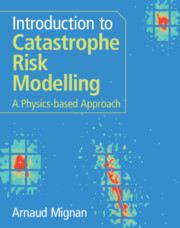Book contents
- Introduction to Catastrophe Risk Modelling
- Reviews
- Introduction to Catastrophe Risk Modelling
- Copyright page
- Dedication
- Contents
- Plates
- Figures
- Tables
- Boxes
- Foreword
- Preface
- Acknowledgements
- Abbreviations and Symbols
- Part I Basics of CAT Modelling
- Part II Advanced CAT Modelling
- Part III CAT Risk Management
- 6 CAT Risk Management
- References
- Index
6 - CAT Risk Management
from Part III - CAT Risk Management
Published online by Cambridge University Press: 08 November 2024
- Introduction to Catastrophe Risk Modelling
- Reviews
- Introduction to Catastrophe Risk Modelling
- Copyright page
- Dedication
- Contents
- Plates
- Figures
- Tables
- Boxes
- Foreword
- Preface
- Acknowledgements
- Abbreviations and Symbols
- Part I Basics of CAT Modelling
- Part II Advanced CAT Modelling
- Part III CAT Risk Management
- 6 CAT Risk Management
- References
- Index
Summary
This final chapter demonstrates how the catastrophe (CAT) models described in previous chapters can be used as inputs for CAT risk management. CAT model outputs, which can translate into actionable strategies, are risk metrics such as the average annual loss, exceedance probability curves, and values at risk (as defined in Chapter 3). Practical applications include risk transfer via insurance and CAT bonds, as well as risk reduction, consisting of reducing exposure, hazard, or vulnerability. The forecasting of perils (such as tropical cyclones and earthquakes) is explored, as well as strategies of decision-making under uncertainty. The overarching concept of risk governance, which includes risk assessment, management, and communication between various stakeholders, is illustrated with the case study of seismic risk at geothermal plants. This scenario exemplifies how CAT modelling is central in the trade-off between energy security and public safety and how large uncertainties impact risk perceptions and decisions.
Keywords
- Type
- Chapter
- Information
- Introduction to Catastrophe Risk ModellingA Physics-based Approach, pp. 235 - 275Publisher: Cambridge University PressPrint publication year: 2024

